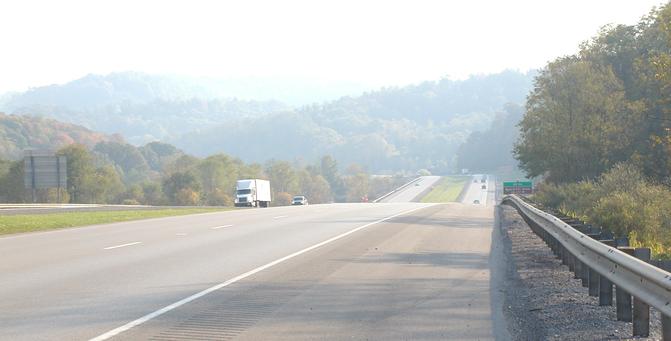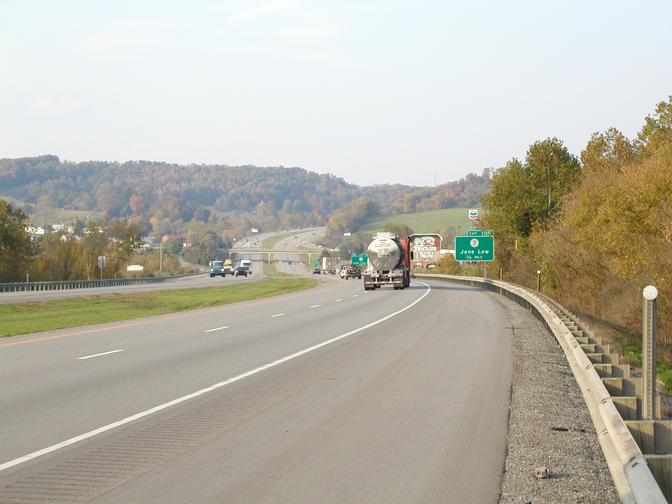
| Next Chapter | Previous Chapter | |
| Chapter 51: Colorful Language | Contents | Chapter 49: CLANRO, Inc. IV, The Decline |
Our Jesse Run farm was 'way out in the country' when we bought it. We had to go by small roads from Lost Creek to Jane Lew and then out a one track road from Jane Lew to the farm. A lot of coal had been hauled down Jesse’s Run, as every one called it, and the road was never properly surfaced, so it was broken and pot holed. The house had run down badly, and wife Esther was reluctant to move from Salem out to the farm.
West Virginia Democrat Senator Jennings Randolph was Chairman of the Senate Appropriations Committee, a very powerful position reached only by senators who had achieved very high seniority. Like every other senator, he saw it as part of his responsibility to bring home some of the tax money sent to Washington. He had done well with Corps of Engineer dams and lakes. Too well, for my taste. And he had funneled a lot of money into West Virginia in other ways. However, he was somewhat frustrated when it came to interstate highways.
The law required connecting population centers, and there was no city in the Northern part of the state large enough. Senator Randolph (or a subordinate) came up with the creative idea of counting the population of Morgantown, Fairmont and Clarksburg together. That made enough to justify an interstate, and the result was I-79. Highway is very expensive to build in West Virginia, compared to many states, because of the hills, which require extensive blasting, grading and bridges. Our topography does not provide extensive deposits of sand and gravel needed for concrete, either. The sand for I-79 came from the Ohio river, and the aggregate was crushed rock from Elkins.
Our Jesse Run farm had had the Redstone coal, which was the thicker seam here, mined in one area, but not the Pittsburgh, which lies below the Redstone, and there is a layer of what was called “fresh water limestone” between them. The man who was foreman when the Redstone was stripped remembered the limestone, and that it was almost uncovered by the stripping. He visited us and asked to test the
(Illustration 50-1)

Looking South on I-79 about two miles south of Jane Lew
limestone, with an eye to mining it for the interstate. It proved too soft to use for aggregate under the concrete surface, but could be used to fill in around culverts, etc. The builders would make the fill with scrapers and compact it with sheep’s foot rollers, getting it to the grade the designers planned. Then they would use a backhoe to dig out for the culverts and drains. After the pipes were put in, they would fill around them with our crushed rock (some also came from John Kolb’s place next door), tamp it in tight, and then build the road surface over that. I don’t know how far north and south our rock was used, but a lot was used.Where it had been stacked it left the surface of our strip job with a limey soil.
The interstate came by two miles from our house. One effect has been the increase in population in the neighborhood. When we moved to Jesse’s Run in 1962, there were about five families between the turn off at Berlin road and the top of the hill that divides our watershed from the Johntown area. Now there are around 50, with several new families each year. This doesn’t make me happy. I want to farm, and the congestion and increase in land value is not to my liking. Another effect was the noise. Sometimes one cannot hear the road noise from I-79 at the house (two miles from the road), but at other times one can. But one can always hear it on the hill.
(Illustration 50-2)

Looking North on I-79 at the Jane Lew intersection
The interstate seemed huge, so many people had to move or lost property. There weren’t the gross underpayments that characterized the Corps of Engineers condemnation “taking” for the dams. A few people realized a lot of money from the interstate. The John Kolb family was one. He was a good businessman and possibly had good advice.
I remember going across the right-of-way from the mouth of Jesse’s Run to McWhorter for six months with farm equipment. It was a great saving to avoid Jane Lew and cut off a three or four miles in the trip from one farm to the other.
Today I travel the interstate with the truck but can’t take farm machinery from farm to farm that way. I enjoy noticing the different state licenses. The most common are Pennsylvania, Ohio, Virginia and Kentucky. States west of the Mississippi are rare, but I think I have seen them from all the contiguous states. Also Alaska and British Columbia. I-79 is the direct route from Ontario to Florida. The Wilderness Plantation Inn, the motel at the Jane Lew intersection, sometimes flies the Canadian flag to attract trade. Our family talks about the “Ontario Birds” flying south in the fall and north again in the spring, when there is a noticeable increase in the Ontario licenses. I have also seen Quebec, Newfoundland and New Brunswick licences, but not the plains provinces of Canada and none from Mexico. However, I have seen an Aruba license, from the West Indies.
Aside One of the pleasures I have from being educated in chemistry is that I know a little about the dangers of chemicals. The big trucks that carry dangerous chemicals on interstate highways are required to have a number telling what they carry on the back and sides, for the benefit of local authorities who must clean up in case of accidents. The numbers are horizontal on a square background with points up and down. I carry a copy of the North American Emergency Response Guidebook in my personal transportation, and look these numbers up, the way a birdwatcher looks up birds in his handbook. I get as big a thrill as the birdwatcher when I see a rare one.
What goes up and down the highways horrifies me. You couldn’t get any one to drive some of those trucks, if the driver really knew what could happen to him in a crash. Few things are dangerous beyond five or six hundred feet, twice the length of a football field. Some would be hideous for someone trapped close to a tanker, though.
Today, April 25, 2002, I saw a tanker driving well over the speed limit, weaving in and out of traffic. The number on it was 1754, and the name of the company on the trailer was DuPont. When I looked it up the chemical is chlorosulfonic acid and sulfur trioxide mixture. Nasty! Most drivers aren’t bad, though.
After the tragic incident at Bophal, India, I became aware of the methyl isocyanate tankers. They used a special design, with girders boxing in the corners, ends, sides and top, protecting the tank. This design originated in Europe, I read somewhere. After about two years the company developed a way to make the methyl isocyanate in the factory where they used it, and it was no longer transported in large quantities on the highway.
| Next Chapter | Previous Chapter | |
| Chapter 51: Colorful Language | Contents | Chapter 49: CLANRO, Inc. IV, The Decline |
Copyright © 1998, 2006, 2008, 2011 S. Tom Bond (stombond at hughes.net)